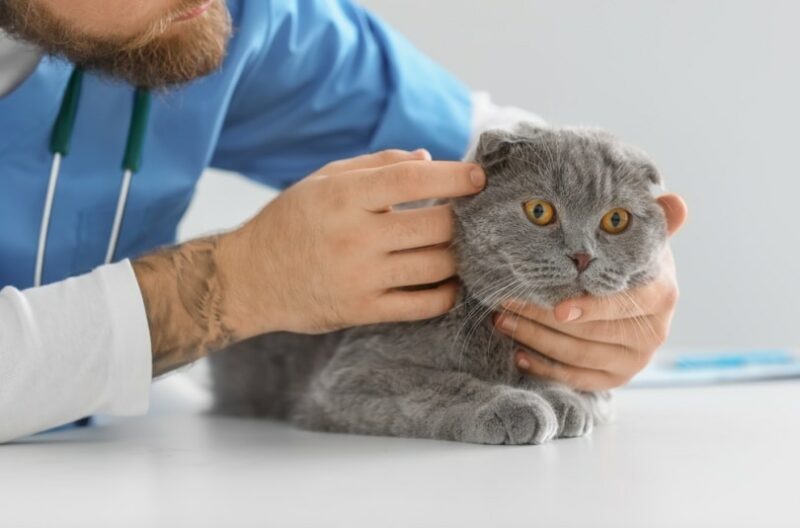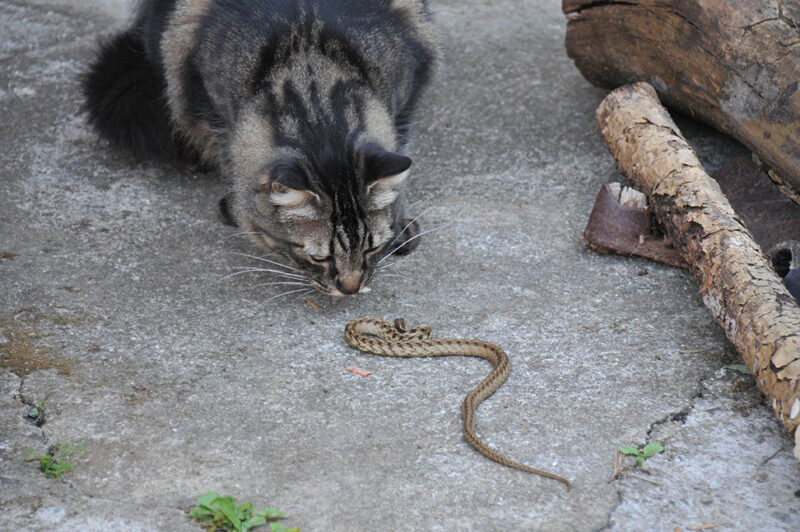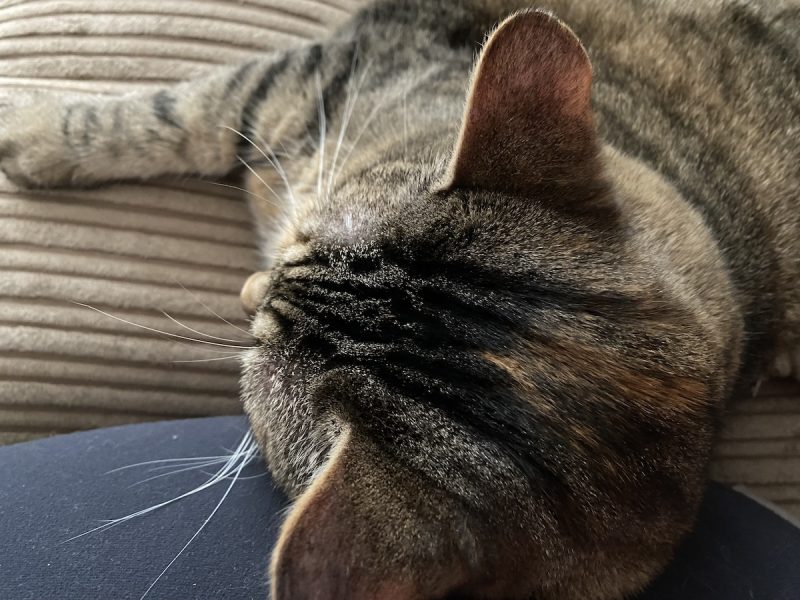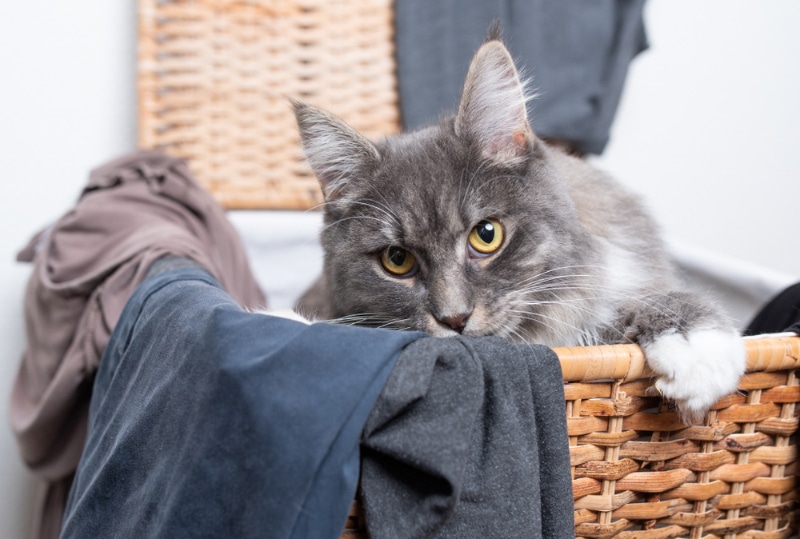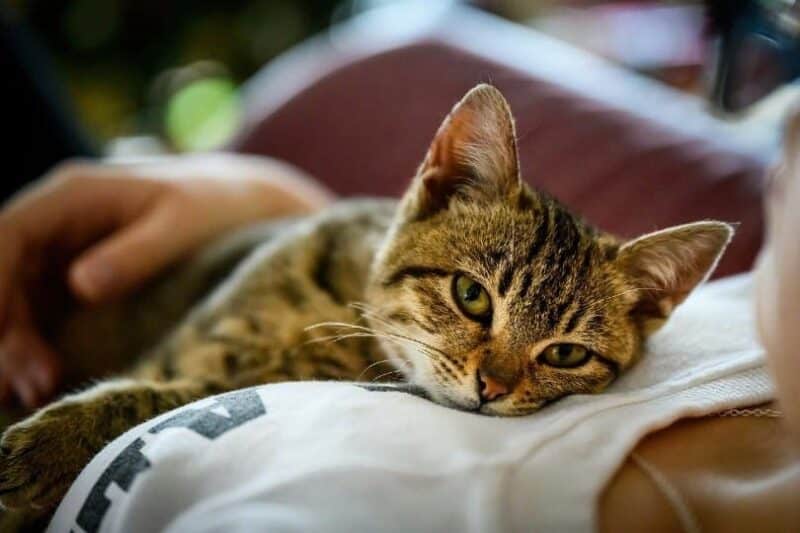Ringworm is a skin infection that affects humans, cats, and other animals. So, yes, cats can get ringworm. It’s one of the most common skin conditions found in household pets and, if caught early, is easy to treat and typically responds well to treatment. However, it is highly contagious and can take time to heal. Keep reading to learn more about ringworm in cats, the signs, and what you can do if you suspect your cat has it.

What Is Ringworm?
The name can be quite deceptive, as ringworm has nothing to do with the intestinal parasites referred to as worms. Ringworm is a fungal infection that usually occurs on the skin but can also affect claws, nailbeds, or other areas. It is caused by dermatophytes, microscopic organisms usually found in soil 1. Because of this, ringworm is much more prevalent in cats that spend time outdoors.
How Do Cats Get It?
This fungal infection can affect humans, cats, and other pets who have skin-to-skin contact or live near each other 2. It can affect any cat but is more commonly seen in kittens because of their developing immune systems and the fact that many share their space with other kittens or their mother who may have it. Long-haired cats are also more likely to suffer from ringworm because keeping their skin free of the organisms that cause the infection is more difficult.
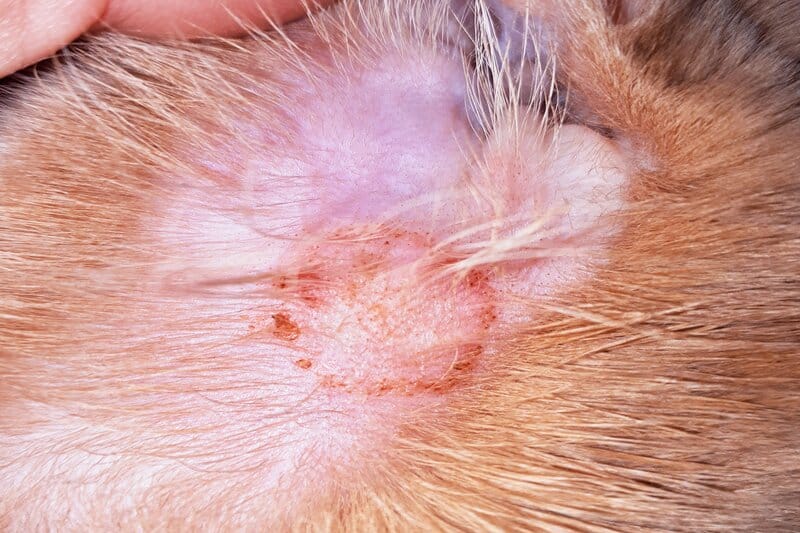
What Are the Signs of Ringworm in Cats?
It can be challenging to identify ringworm in cats, especially in mild cases where the only sign could be irritated or scaling skin. In more severe cases, a cat may develop thickened patches of skin, circular lesions, and hair loss. The ringworm fungus may spread to the claws as your cat scratches their irritated and inflamed skin. Their claws could turn rough and eventually deformed if the infection progresses.
Because ringworm is so easily spread between cats, other pets, and even humans living in the home, it is essential to be vigilant about spotting signs of the fungus or any other abnormal symptoms your pet may be displaying. They could be spreading the skin infection for some time without realizing it.
If you are concerned about the health and well-being of your pet, seek veterinary advice for the best course of action.
If you need to speak with a vet but can't get to one, head over to PangoVet. It's an online service where you can talk to a vet online and get the advice you need for your pet — all at an affordable price!

How Serious Is Feline Ringworm?
While ringworm typically doesn’t pose a severe health risk, it can cause discomfort for quite some time as it’s being treated. It usually responds well to treatment in both cats and humans. Still, reinfection is possible, and treatment plans should be followed closely to prevent recurring infections.
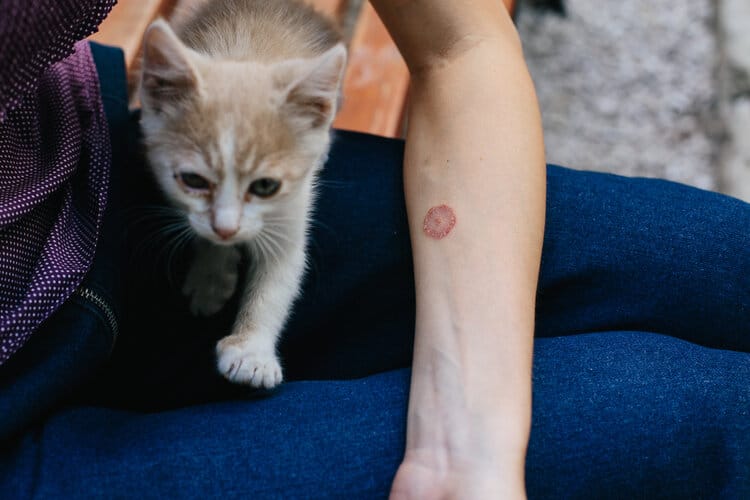
How Is Ringworm Treated?
Ringworm treatment consists of several parts, and all are necessary to ensure the fungus is removed not only from the skin but also from the home. Minor cases caught early where no other instances of ringworm have been found in the home may only need a topical treatment. However, most patients receive topical therapy and oral medication to treat the infection. The treatment will last for more than 6 weeks.
It’s also recommended that the home is cleaned thoroughly once ringworm is diagnosed. Fungal spores may have been shed without you realizing it. Your veterinarian may suggest clipping your cat’s fur around affected areas to reduce shedding more fungal spores and keeping your cat confined to a specific area. Vacuuming and mopping the home with a chlorine solution daily for several weeks can remove any surface spores and limit transmission of the infection to other pets and people, especially children.

What If It Goes Untreated?
Ringworm is highly contagious and, if left untreated, is likely to spread to others. However, some cats can fight the infection on their own within 12 to 18 months without any medical care. If they are elderly or have any medical conditions, it could take longer, or they may not be able to. Seeking vet care as soon as possible for this infection is highly recommended, especially considering the infection could spread to you or other pets.
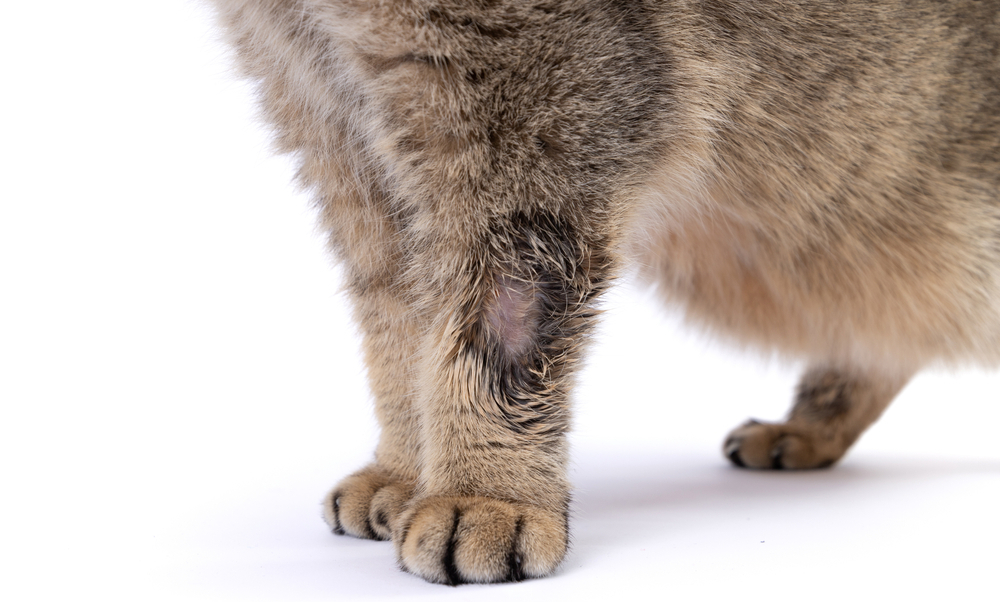
Could It Be Something Else?
If your cat has fleas or has recently had them, their skin irritation could be a reaction to the fleas or the medication used to treat them. Even seasonal allergies can affect the skin, like pollen from grass or trees that adheres to the fur or skin. They can cause reddened or inflamed skin, possibly even hair loss. The best course of action is to visit their veterinarian for an evaluation. They will be able to diagnose the problem and prescribe the best treatment.

Conclusion
Ringworm in cats may sound scary, but it only is if it gets out of control. Your veterinarian is your best ally in treating it, especially if your cat has a severe case. Following their prescribed medications and carefully cleaning the home environment can help mitigate the risk of spreading the fungal infection to other pets and humans.
Related Reads:
- How to Treat Ringworm in Cats (6 Vet-Approved Tips)
- How Long to Quarantine A Cat With Ringworm? What You Need to Know!
Featured Image Credit: Pixel-Shot, Shutterstock
